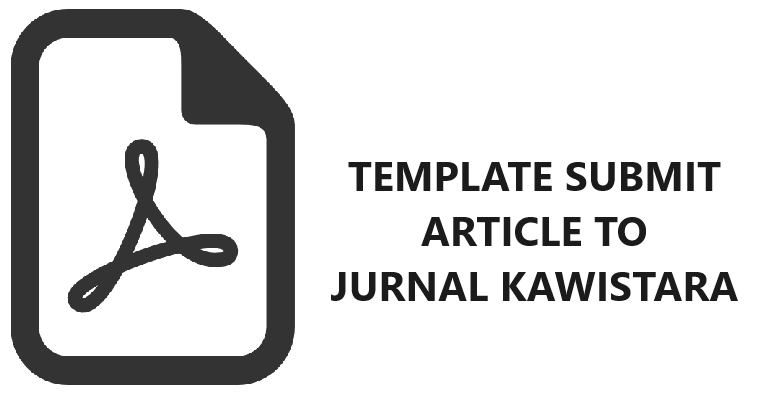ASPECTS UNDERLYING THE MODIFICATION OF BRIDAL COSTUME IN GORONTALO AT THE WEDDING RECEPTION
Hariana Hariana(1*), G.R. Lono Lastoro Simatupang(2), Timbul Haryono(3), SP. Gustami(4)
(1) Universitas Negeri Gorontalo
(2) Universitas Gadjah Mada, Yogyakarta
(3) Universitas Gadjah Mada, Yogyakarta
(4) Universitas Gadjah Mada, Yogyakarta
(*) Corresponding Author
Abstract
The visualization of the Gorontalonese bridal costume worn at the wedding reception is increasingly diverse in terms of the modification forms. The modification can be seen in the design elements including shape, texture, color, material, and accessory. Furthermore, the modification of the current costume makes the functional value of the bridal costume different from the already patterned one, which can be seen from its social, symbolic, and economic values of the Gorontalo community. The data in this study was collected through the review of books and previous studies related to the wedding clothing, the interviews, and the observation of bridal costumes and analyzed using the qualitative data analysis approach. The observation of unmodified bridal costume objects was done at the Dulahopa Traditional House in Gorontalo, while that of modified bridal costume objects was conducted on the widely used bridal costumes within the last two years in Gorontalo. The purpose of this study was to find out the aspects underlying the modification of bridal costume in Gorontalo. The results show that Gorontalo people tend to choose modified wedding dresses in the wedding party. Moreover, this study suggests that the bridal costume modification is influenced by the family’s social status in Gorontalonese community, migratory Gorontalonese people (staying outside the area of origin), and technological advancement.
Keywords
Full Text:
PDFReferences
Aryanto, H. (2008). Makna Tanda Pada Fesyen Pengantin Jawa Bergaya Modern. Nirmana, 10(1), 26–31.
Creswell, J. W. (2015). Penelitian Kualitatif & Desain Riset. Yogyakarta: Pustaka Pelajar.
Domili, B., Djakaria, S., Katuuk, E., Tangkilisan, M., & Tambajong. (n.d.). Budaya Masyarakat Suku Bangsa Gorontalo Di Kabupaten Gorontalo. Gorontalo: Departemen Pendidikan Nasional Proyek Pengkajian Dan Pembinaan Nilai-Nilai Budaya Sulawesi Utara.
Feldman, E. B. (1967). Art as Image and Idea. New Jersey: Prentice-Hall, Inc.
Gustami, SP (2008). Nukilan Seni Ornamen Indonesia. Yogyakarta: Jurusan Kriya FSR ISI.
Hariana. (2013). Kajian Semiotika Fashion Dengan Objek Desain Busana Tradisional. In Seminar Nasional 2013 “Kesiapan SMK dalam Implementasi Kurikulum 2013” (pp. 448–456). Yogyakarta: Jurusan PTBB FT UNY.
Hariana, Simatupang, L. L., Haryono, T., & Gustami, SP. (2016). Modifikasi Busana Bili’u dan Paluwala Sebagai Pakaian Perkawinan Masyarakat Gorontalo: Aspek Sosiologi dan Teknologis. In Seminar Nasional Dalam Rangka Konvensi Nasional VIII APTEKINDO dan Temu Karya XIX FT/FPTK Se-Indonesia Medan, 3 - 6 Agustus 2016. Medan: Fakultas Teknik Universitas Negeri Medan.
Haryono, T. (2001). Logam dan Peradaban Manusia. Yogyakarta: Philosophy Press.
Hauser, A. (1985). The Sociology of Art: Trans. Kenneth J. Nortcott. Chicago and London: University of of Chicago Press.
Kawamura, Y. (2005). Fashion-ology: An Introduction to Fashion Studies. Oxford, New York: Berg Publisher.
Kotler, P. (1989). Manajemen Pemasaran. Jakarta: Erlangga.
Kuntjoro-Jakti, R.A . D. R. (2010). Ragam Hias Nusantara. Humaniora, 1(2), 246–252.
Lasalewo, T. (2010). Strategi Industri. Bandung: Wahana Media Pustaka.
Maresa, A. (2009). Estetika Simbolis Dalam Busana Pengantin Adat Minangkabau DI Padang. Filsafat, 19(3), 255–272.
Meilani. (2013). Teori Warna : Penerapan Lingkaran Warna dalam Berbusana. Humaniora, 4(9), 326–338.
Meyrasyawati, D. (2013). Fesyen dan Identitas: Simbolisasi Budaya dan Agama Dalam Busana Pengantin Jawa Muslim Di Surabaya. Jurnal Makara Seri Sosial Humaniora, 17(2), 99–108.
Morris, D. (2002). People Watching: The Desmond Morris Guide to Body Language. London: Vintage.
Nasrullah, R. (2013). Semiotika Naratif Greimasian Dalam Iklan Busana muslim. Journal Kawistara, 3(3), 227–334.
Papanek, V. (1985). Design For The Real World: Human Ecology and Social Change. London: Thames.
Sachari, A. (2005). Pengantar Metodologi Penelitian Budaya Rupa - Desain, Arsitektur, Seni Rupa dan Kriya. Jakarta: Erlangga.
Setiawan, D. (2015). Konsep Pakaian Jogya Fashion Week Carnival Dalam Struktur Sosial DI Yogyakarta. Journal Kawistara, 5(2).
Simatupang, L.L (2013). Pergelaran: Sebuah Mozaik Penelitian Seni Budaya. Yogyakarta: Jalasutra.
Suhendra, A. (2013). Kontestasi Identitas Melalui Pergeseran Interpretasi Hijab Dan Jilbab Dalam Al Qur ’ an. Palastren, 6(1), 1–22.
Tahid, S., & Nurcahyanie, Y. (2007). Konsep Teknologi dalam Pengembangan Produk Industri. Jakarta: Prenada Media Group.
UNESCAP. (1989). Technology Atlas Project. A Framework For Technology Based Development: Technology Content Assessment & Technology Climate Assessment (Vol. 2 & 3).
Wagiran. (2007). Inovasi Pembelajaran Dalam Penyiapan Tenaga Kerja Masa Depan. Jurnal Pendidikan Teknologi Dan Kejuruan, 16(1), 41–55.
Weiner, M. (1977). Modernisasi Dinamika Pertumbuhan. Yogyakarta: Gadjah Mada University Press.
Wulandari, Y. N., Marwiyah, & Setyowati, E. (2012). Peranan Juru Rias pengantin Terhadap Pelestarian Tata Rias dan Busana Pengantin Adat Solo. Journal of Beauty and Beauty Health Education, 1(1), 10–14.Article Metrics
Refbacks
- There are currently no refbacks.
Copyright (c) 2018 Jurnal Kawistara

This work is licensed under a Creative Commons Attribution-ShareAlike 4.0 International License.
Jurnal Kawistara is published by the Graduate School, Universitas Gadjah Mada.












